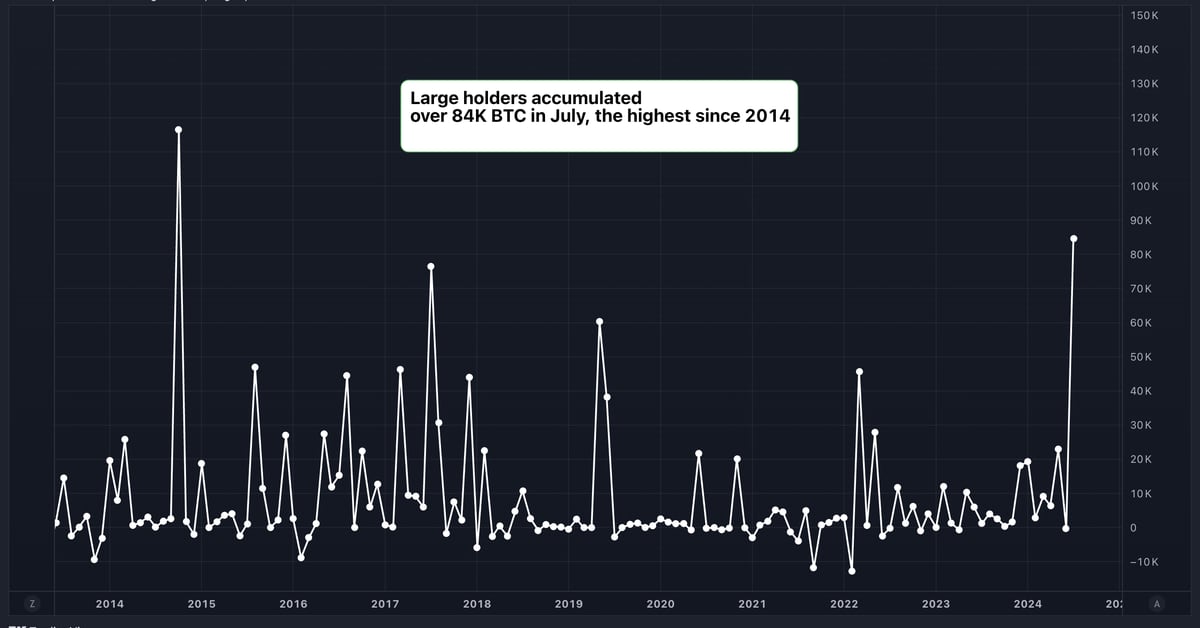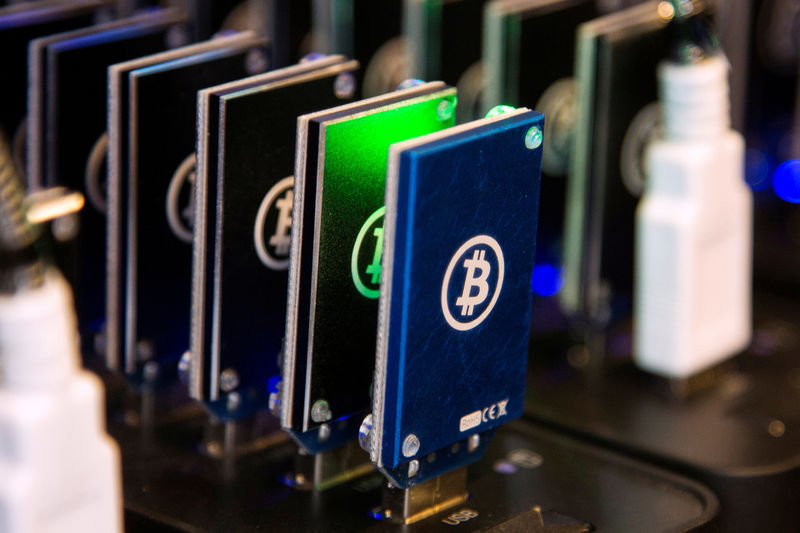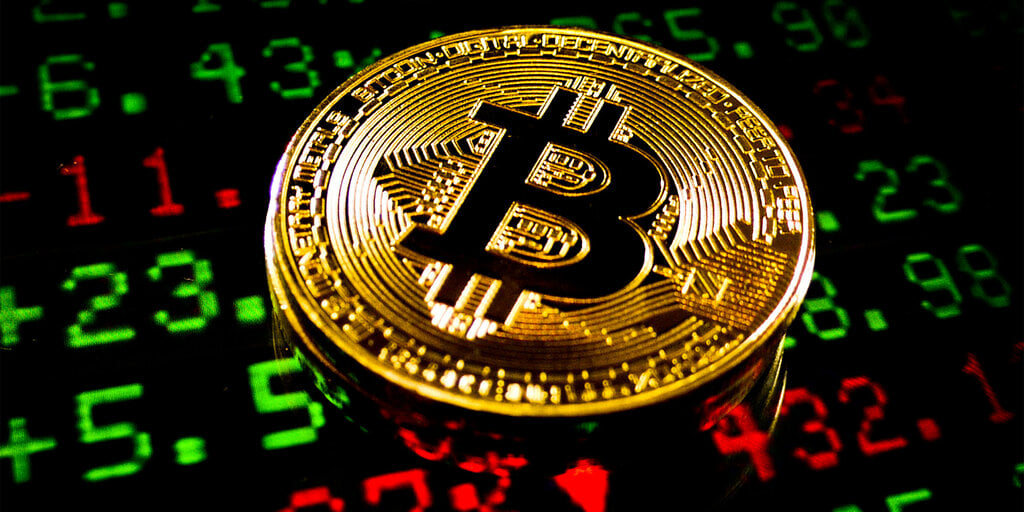Bitcoin
Why I Chose Bitcoin Ordinals to Launch ‘Frontline’

I like to say that I do pixels very well, but I am not a blockchain expert. I am afraid of anything related to statistics and security, because any mistake usually means that you are either completely wrong (when dealing with statistics) or you lose a lot of money (when it comes to security). Writing a smart contract is a daunting task for me. That doesn’t mean that I have no idea about the underlying technology that powers blockchains and NFTs/Ordinals, however: it just means that I stop at understanding.
For my latest collection, I’m partnering with Metagood, the creators of the Ordinals OnChainMonkey collection, to launch on the Ordinals protocol. This collection will be my first on Bitcoin, which is different from what I’ve used in the past (mostly NFTs on Ethereum and Tezos) and is taking all the lessons learned from other chains to do some clever things out of the box.
The first thing I love about Ordinals is that it has to be on-chain. That’s it. No external assets, no links. What you have is what you get. Many generative art pieces rely on code libraries (e.g. p5.js, three.js) to help with commonly used features that are needed to generate the pieces.
The protocol has a solution to this problem that is elegant by design. Any Ordinal can refer to another Ordinal. It can be a library, it can be an asset, it can be the whole thing to create remixes. It’s up to you to find creative uses for the asset. You can find the widely used libraries on-chain, in Bitcoin: p5js, three.js are already there. Do you know who ported them? Danny Yangcreator of OnChainMonkey.
But how exactly does this work? How can my Ordinal refer to another Ordinal? In Ethereum (and others, as far as I know), NFTs are basically token IDs that are issued from a given contract. You then need the contract address to explore which NFTs are there and who owns them.
Ordinals have (again) found a clever solution to this problem. This feature is called recursion. A Bitcoin is a collection of one hundred million satoshis, each with a number, according to its minting order. An Ordinal is linked to a unique Satoshi, so they are ordered. That’s why they are called Ordinals. You can use another Ordinal (or other Ordinals) on your Ordinal to make a new Ordinal. You can then create complex pieces using different assets that already exist, and anyone can access them.
The other feature that is also interesting is the parent-child relationship. It is similar to the recursion feature in that it is a reference to another Ordinal. But this one is secured in the same way that blockchains work (remember the cryptographic part of “cryptocurrency”? That refers to signing messages using cryptography, the private key/public key thing). You can only refer to another Ordinal as the parent if you can prove that you own that Ordinal.
What can you do with this? It turns out that this is also a clever way to establish provenance and more. You can make an Ordinal your signature and use it to be the parent of all your future pieces. You can make an Ordinal the “generator” of a generative collection and have all the individual mints in that collection refer to the code as their parent. And much more.
Ordinals offer elegant solutions to serve the purpose of creating generative art collections on the Bitcoin chain. They are, of course, not as flexible as smart contracts and do not claim to be. They provide enough to build something amazing.
FrontLine is my latest collection of long-form generative art. I’m honored to be able to share it with you, this time on Ordinals, with the OnChainMonkey community as the initial target audience. It took me about a year to get to the finish line, and it’s a personal journey.
“FrontLine” reflects what’s been happening recently on a number of levels. The piece was challenging to create and satisfying to complete. From the beginning, this was conceived as a collaborative piece with OnChainMonkey. I was partly inspired by the general ethos behind the community around OCM: pushing people towards “good,” but there is no clear definition of good, only vague cultural concepts around what societies accept as values to strive for. Good only exists if its opposite makes sense: there is a dimension of good versus evil, lawful versus chaotic, light versus dark, A versus B. Two sides of something, with something in between.
FrontLine tries to represent this struggle, this fight that happens in every moment. What seemed like an obvious “good” choice a few seconds ago is now its opposite, thanks to the additional knowledge. The division between the two sides is never clear: the battle continues, and a lot is happening in Frontline.
The piece combines several algorithms competing to occupy the space: one that will search for the negative space and another that will try to connect the dots; the connecting algorithm is also clearly divided into two sides with different approaches to the task at hand. As each new iteration of the algorithm is almost unpredictable, but explainable a posteriori: the rules of the underlying algorithms are actually quite straightforward. Once all the space has been explored, the battle begins and the front line appears, sometimes complex and vibrant, sometimes irregular and vague – but always present.
There is no perfect world. There is no good without evil. What matters is where to draw the line. It’s up to you to figure out what you want both sides to be. It could be ETH/BTC. I personally root for the people who innovate: they will be on the front lines.
Do I have an answer to all the questions? No. I just know that you have to try things to move forward. You have to be where it happens. You have to fight there. You have to be on the front lines.
Please note: The opinions expressed in this column are those of the author and do not necessarily reflect those of CoinDesk, Inc. or its owners and affiliates.
Bitcoin
‘This is huge’ — Billionaire Mark Cuban issues ‘incredible’ Bitcoin and crypto prediction amid price slump

Bitcoin has surged again this year under former President Donald Trump Cryptocurrency boosts US presidential election in November with ‘revolutionary’ plan.
The price of bitcoin has surged to more than its all-time high in recent months, surpassing $70,000 per bitcoin and triggering a wave of mega-optimistic predictions about the price of bitcoinalthough it fell again this week to below $65,000 after the Federal Reserve kept interest rates steady.
Now, as Elon Musk suddenly breaks his silence on bitcoin and cryptocurrenciesBillionaire investor Mark Cuban called a California plan to digitize 42 million car titles using blockchain an “incredible step forward” and “huge” for cryptocurrencies.
Sign up for free CryptoCodex now—A daily five-minute newsletter for traders, investors, and crypto curious people that will keep you up to date and ahead of the bitcoin and crypto bull market
Mark Cuban, famous Shark Tank investor and billionaire owner of the NBA team Dallas Mavericks, has… [+] called a cryptocurrency update “amazing” amid bitcoin’s price slump.
Getty Images
The California Department of Motor Vehicles (DMV) has digitized 42 million car titles using blockchain, it was reported by Reuters, through technology company Oxhead Alpha on the Avalanche blockchain and designed to detect fraud and facilitate the securities transfer process.
“This is an incredible development for crypto,” Cuban, best known as an investor on TV’s Shark Tank and owner of the Dallas Mavericks NBA team, posted on X, joking that U.S. Securities and Exchange Commission (SEC) Chairman Gary Gensler could sue the state as part of his hostility toward cryptocurrencies and blockchain technology.
“The reason this is huge for crypto is because people who hold the tokens will have an app with an Avalanche wallet,” Cuban said. “Tens of millions of Californians having and using a crypto wallet in the next five years, or however long it takes, normalizes the use of wallets and crypto.”
John Wu, president of Avalanche developer Ava Labs, told Reuters that California’s DMV is “creating a wallet that you can download on your phone.”
Sign up for CryptoCodex now—A free daily newsletter for the crypto-curious
Bitcoin’s price has rallied this year, triggering a wave of bullish bitcoin price predictions from… [+] people like billionaire Mark Cuban.
Forbes Digital Assets
Last month, Cuban predicted that if the US dollar falls as the global reserve currency, bitcoin could become “a global ‘safe haven’” and a “global currency.” potentially sending the price of bitcoin to a much higher level.
According to Cuban, bitcoin could become what its most ardent supporters “envision” — a means “of protecting our economies… This is already happening in countries facing hyperinflation.”
The price of bitcoin has skyrocketed over the past year, largely due to the world’s largest asset manager, BlackRock, leading a bitcoin attack on Wall Street.
Bitcoin
Large Bitcoin (BTC) Holders Added $5.4 Billion Worth of BTC in July, Data Shows

Please note that our Privacy Policy, terms of use, cookiesIt is do not sell my personal information Has been updated.
CoinDesk is a awarded media outlet that covers the cryptocurrency industry. Its journalists follow a strict set of editorial policies. In November 2023, CoinDesk has been acquired by the Bullish group, owner of Optimistica regulated digital asset exchange. The Bullish Group is majority owned by Block.one; both companies have interests CoinDesk has a portfolio of blockchain and digital asset businesses and significant holdings of digital assets, including bitcoin. CoinDesk operates as an independent subsidiary with an editorial board to protect journalistic independence. CoinDesk employees, including journalists, may receive options in the Bullish group as part of their compensation.
Bitcoin
Peter Schiff criticizes Michael Saylor’s Bitcoin hype by U.Today

U.Today – Renowned economist and cryptocurrency critic Peter Schiff has criticized Michael Saylor’s recent hype about the growing adoption of cryptocurrencies as a strategic treasury asset by corporations.
Michael Saylor, a well-known Bitcoin advocate and president of MicroStrategy, recently shared his enthusiasm on X about the growing adoption of Bitcoin as a strategic treasury asset.
Citing a comment made by Bitcoin investor Bill Miller in a recent interview with CNBC, Saylor tweeted: “We now have more companies coming forward and saying we will put Bitcoin on our balance sheet as a strategic treasury asset.”
However, not everyone shares Saylor’s enthusiasm. Schiff, a vocal Bitcoin critic and gold bull, was quick to respond with his usual skepticism. In a pointed tweet, Schiff argued: “Bitcoin is neither strategic nor appropriate as a treasury asset. Companies should not risk shareholder funds. They should pay dividends and let shareholders risk their own money.”
Bitcoin enthusiasts are not intimidated
However, Schiff’s criticism shouldn’t deter Bitcoin enthusiasts, who often take Schiff’s words with a pinch of salt. To put things in context, Michael Saylor began buying Bitcoin in 2020 as an inflation hedge and alternative to money. Saylor’s company, MicroStrategy, is among the largest public holders of Bitcoin in the world. As of June 20, it held 226,331 BTC, purchased for around $8.33 billion at an average price of $36,798.
Over the weekend, Schiff was surprised when 87% of the more than 11,000 Bitcoin holders who responded to his X survey said they would not sell any of their Bitcoin even if the price dropped more than 99% to $120. They said not only would they not sell, but that they would continue to buy even when prices dropped.
Schiff unexpectedly revealed that “the main selling point for investors to buy Bitcoin is its excellent past performance record.”
At the time of writing, Bitcoin is trading at $66,067, having reached all-time highs of nearly $74,000 in mid-March.
Bitcoin
Bitcoin Falls as ETF Flows Reverse, Mt. Gox Moves Billions

In a week of drastic fluctuations, the price of Bitcoin (BTC) has retreated from its highs and is currently trading at US$66,250, down 0.9% in European trading.
This volatility comes on the heels of a significant surge above $70,000 earlier in the week, fueled by former President Donald Trump’s ambitious cryptocurrency plans announced in a Bitcoin Conference in Nashville.
Trump’s announcement to fire Securities and Exchange Commission Chairman Gary Gensler and establish a strategic Bitcoin reserve if elected president has temporarily sent the cryptocurrency market into a frenzy.
However, the excitement was short-lived as a series of events unfolded which caused investor sentiment to sour.
A significant sell-off of about 8% was triggered when the US Marshals Service moved $2 billion in Bitcoin for new wallets.
This move has reignited fears of a potential large-scale liquidation, compounded by lingering concerns over a possible Bitcoin liquidation from Mt. Gox. Early this morning, Mt. Gox administrator transferred US$2.2 billion value of your BTC assets in a new wallet.
Meanwhile, the US Bitcoin ETF spot market is showing signs of fluctuation, according to data from SoSo Value. On July 30, Bitcoin spot funds experienced their first net outflow in five days, totaling $18.3 million.
The Grayscale Bitcoin Trust (GBTC) saw outflows of $73.6 million, while the BlackRock iShares Bitcoin Trust (IBIT) attracted $74.9 million in inflows. But outflows from other funds left the category in the red at the end of Tuesday’s trading session. The total net asset value of spot Bitcoin ETFs currently stands at a substantial $58.5 billion.
In other crypto news, Ripple (XRP) is up 8.6% in the past 24 hours, hitting over 64 cents – its highest point since March 25, according to CoinGecko. data.
This rally comes amid a scheduled token unlock and growing optimism around a potential deal in the long-running SEC vs. Ripple lawsuit.
The crypto community is closely watching the SEC’s actions, particularly its intention to amend its complaint against Binance regarding “Third-Party Cryptocurrency Securities,” which some interpret as a positive sign for Ripple.
On a market analysis noteSingapore-based cryptocurrency trading desk QCP Capital wrote that while election headlines continue to dominate, several crucial macroeconomic events loom on the horizon.
“Election headlines will continue to be a key focus, but several key macroeconomic events are also on the horizon. Key events starting with the FOMC meeting on Wednesday, megacap tech earnings (Apple, Amazon, Meta) throughout the week, and unemployment data on Friday,” QCP Capital wrote.
Edited by Stacy Elliott.
-

 Regulation11 months ago
Regulation11 months agoRipple CTO and Cardano founder clash over XRP’s regulatory challenges ⋆ ZyCrypto
-

 Regulation10 months ago
Regulation10 months agoNancy Pelosi Considers Supporting Republican Crypto Bill FIT21 – London Business News
-

 Videos11 months ago
Videos11 months agoCryptocurrency News: Bitcoin, ETH ETF, AI Crypto Rally, AKT, TON & MORE!!
-

 Regulation11 months ago
Regulation11 months agoBitcoin’s future is ‘bleak’ and ripe for regulation, says lead developer
-

 News8 months ago
News8 months agoAave Price Increases Following Whales Accumulation and V3.1 Launch
-

 Regulation8 months ago
Regulation8 months agoSouth Korea Imposes New ‘Monitoring’ Fees on Cryptocurrency Exchanges
-

 Regulation8 months ago
Regulation8 months agoA Blank Sheet for Cryptocurrencies: Kamala Harris’ Regulatory Opportunity
-

 Regulation8 months ago
Regulation8 months agoCryptocurrency Regulations in Slovenia 2024
-

 News11 months ago
News11 months agoThe trader earned $46 million with PEPE after reaching a new ATH
-

 Regulation10 months ago
Regulation10 months agoCrypto needs regulation to thrive: Tyler Cowen
-

 Blockchain11 months ago
Blockchain11 months agoSolana ranks the fastest blockchain in the world, surpassing Ethereum, Polygon ⋆ ZyCrypto
-

 Blockchain10 months ago
Blockchain10 months agoSolana Surpasses Ethereum and Polygon as the Fastest Blockchain ⋆ ZyCrypto

















